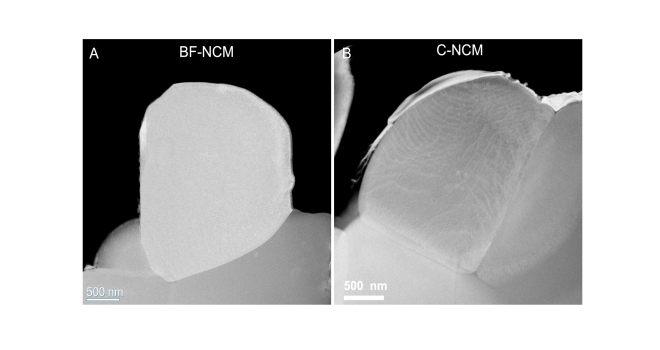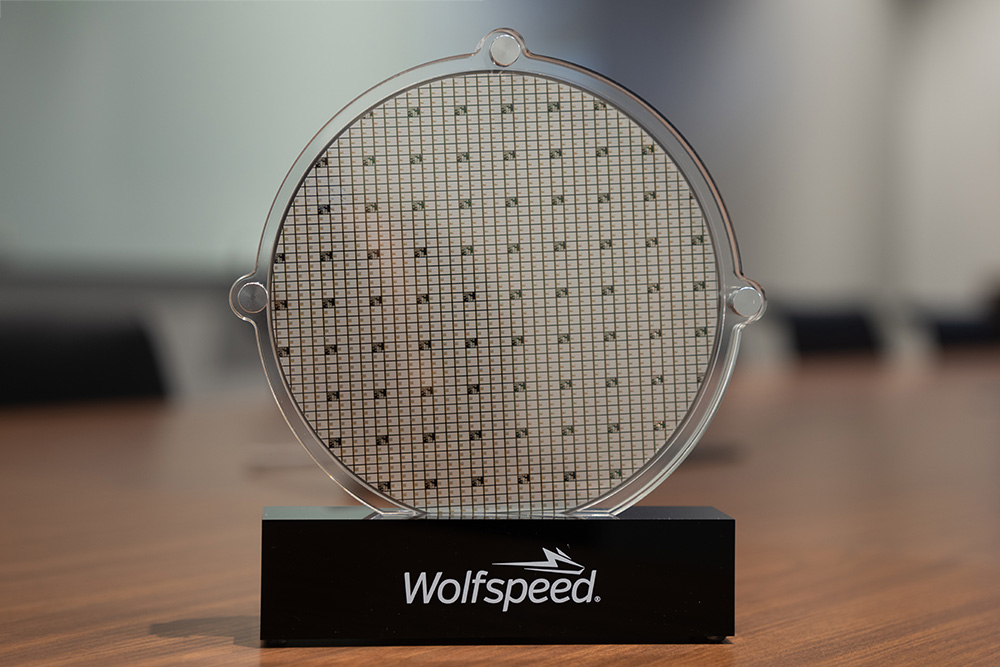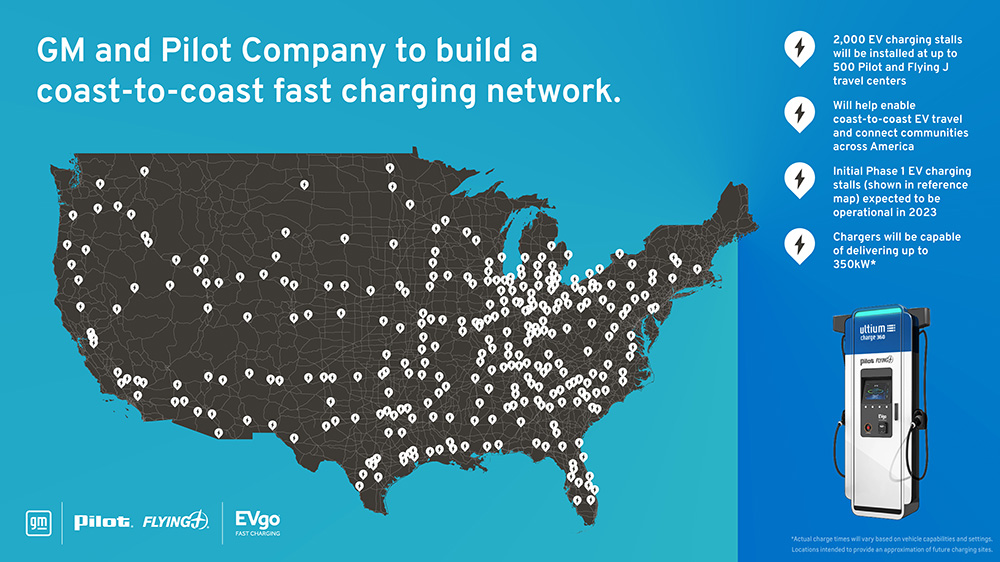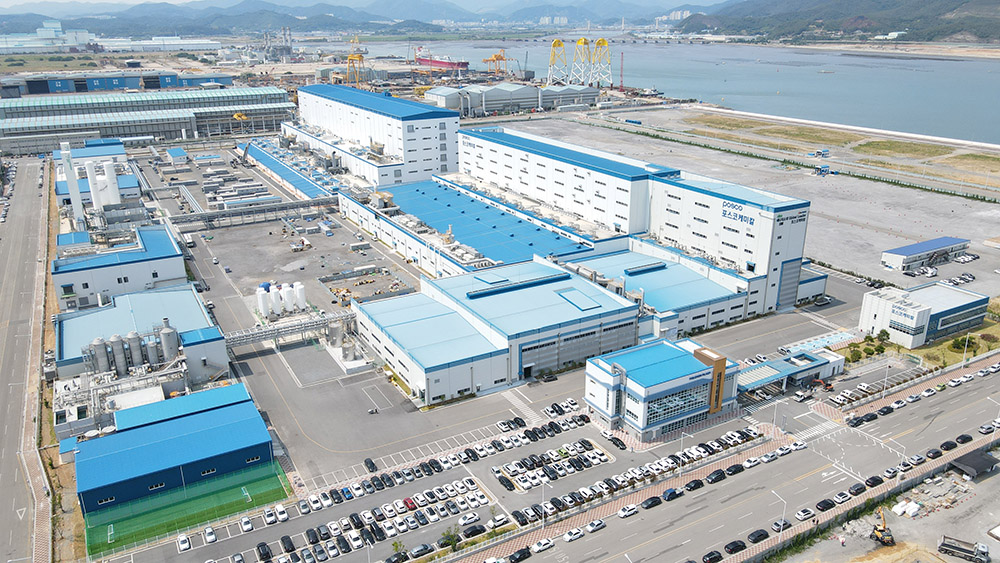[ad_1]
Image shows single crystals of cathode material: (A) no internal boundaries and (B) internal boundaries visible. (Image by Argonne National Laboratory.)
A research team has developed a new NMC cathode design that prevents cracking in cathode particles through a structure that doesn’t have boundaries between particles.
“A different approach to avoid this cracking involves single-crystal particles,” according to Argonne National Laboratory. “Electron microscopy of these particles indicated they have no boundaries. The problem the team faced was that cathodes made from both coated polycrystals and single crystals still formed cracks with cycling. So, they subjected these cathode materials to extensive analyses at the Advanced Photon Source (APS) and Center for Nanoscale Materials (CNM), DOE Office of Science user facilities at Argonne.”
Using five APS beamlines, researchers found that the single crystals had internal boundaries, says Argonne. “Scanning and transmission electron microscopies at CNM verified the finding.”
The research team also performed tests and calculations in order to develop a boundary-free single-crystal cathode design.
“Testing of small cells with such single-crystal cathodes at very high voltage showed a 25% increase in energy storage per unit volume, with almost no loss of performance over 100 cycles of testing,” says Argonne. “By contrast, over the same cycle life, the capacity declined by 60% to 88% in NMC cathodes composed of single crystals with many internal boundaries or with coated polycrystals.”
According to research team member Maria Chan, “Our calculations showed how boundaries lead to oxygen release at high voltage and, therefore, performance decline.”
“We now have guidelines that battery manufacturers can use to prepare cathode material that is boundary-free and works at high voltage,” says Argonne Distinguished Fellow Khalil Amine. “And the guidelines should apply to other cathode materials besides NMC.”
Source: Argonne National Laboratory
[ad_2]
Source link




